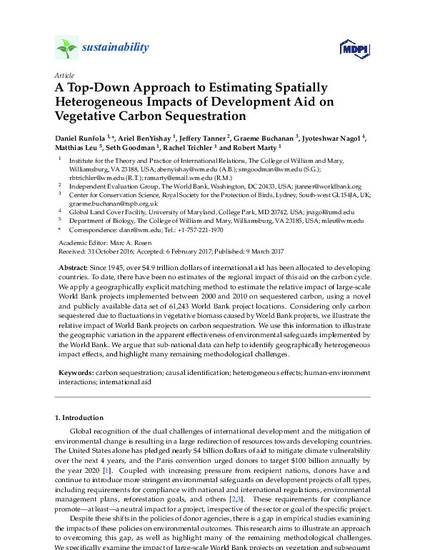
Since 1945, over $4.9 trillion dollars of international aid has been allocated to developing countries. To date, there have been no estimates of the regional impact of this aid on the carbon cycle. We apply a geographically explicit matching method to estimate the relative impact of large-scale World Bank projects implemented between 2000 and 2010 on sequestered carbon, using a novel and publicly available data set of 61,243 World Bank project locations. Considering only carbon sequestered due to fluctuations in vegetative biomass caused by World Bank projects, we illustrate the relative impact of World Bank projects on carbon sequestration. We use this information to illustrate the geographic variation in the apparent effectiveness of environmental safeguards implemented by the World Bank. We argue that sub-national data can help to identify geographically heterogeneous impact effects, and highlight many remaining methodological challenges.
Available at: http://works.bepress.com/seth-goodman/2/
